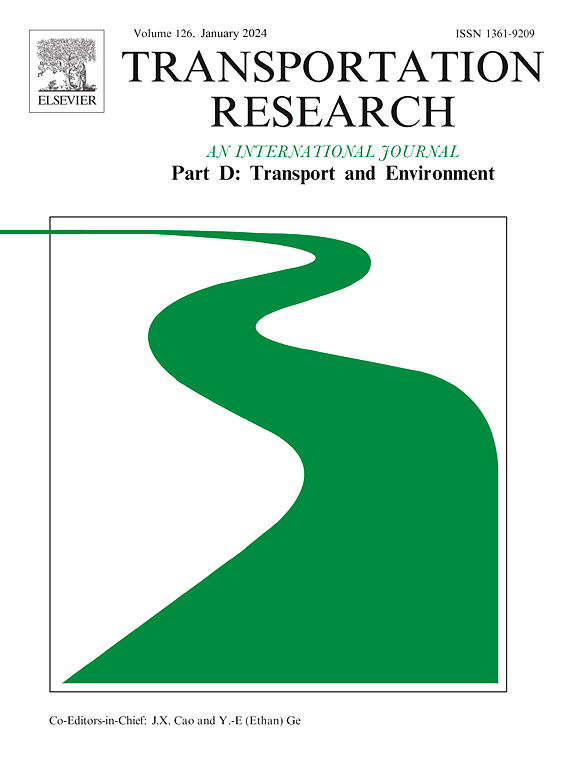Virtual reality in stated preference survey for walkability assessment
IF 7.3
1区 工程技术
Q1 ENVIRONMENTAL STUDIES
Transportation Research Part D-transport and Environment
Pub Date : 2025-02-01
DOI:10.1016/j.trd.2024.104545
引用次数: 0
Abstract
This study analyzes the use of virtual reality in walkability assessment. We conducted a stated preference survey to quantify urban characteristics promoting walkability. The urban characteristics were represented in virtual scenarios, presented in standard videos, and compared with three-dimensional scenarios using virtual reality immersive equipment. Data analysis involved: (i) measure of agreement between the online and in-person survey choices; (ii) analysis of Simulator Sickness symptoms; (iii) estimation of discrete choice models; and (iv) calculation of marginal effects. The results show agreement between online and in-person surveys regarding participants’ neighborhood choices. Some symptoms of simulator sickness increased after the immersive experience, but no apparent effect on participants’ choices was observed. The model results and the marginal effects computed indicate that Attractiveness and Sidewalk pavement quality were the most valued attributes by respondents in both surveys, followed by Security. Virtual reality facilitated the identification of urban environment aspects by providing a more realistic representation of complex attributes such as Safety, Attractiveness, and the availability of Stores and Services through its immersive nature.

求助全文
约1分钟内获得全文
求助全文
来源期刊
CiteScore
14.40
自引率
9.20%
发文量
314
审稿时长
39 days
期刊介绍:
Transportation Research Part D: Transport and Environment focuses on original research exploring the environmental impacts of transportation, policy responses to these impacts, and their implications for transportation system design, planning, and management. The journal comprehensively covers the interaction between transportation and the environment, ranging from local effects on specific geographical areas to global implications such as natural resource depletion and atmospheric pollution.
We welcome research papers across all transportation modes, including maritime, air, and land transportation, assessing their environmental impacts broadly. Papers addressing both mobile aspects and transportation infrastructure are considered. The journal prioritizes empirical findings and policy responses of regulatory, planning, technical, or fiscal nature. Articles are policy-driven, accessible, and applicable to readers from diverse disciplines, emphasizing relevance and practicality. We encourage interdisciplinary submissions and welcome contributions from economically developing and advanced countries alike, reflecting our international orientation.

 求助内容:
求助内容: 应助结果提醒方式:
应助结果提醒方式:


